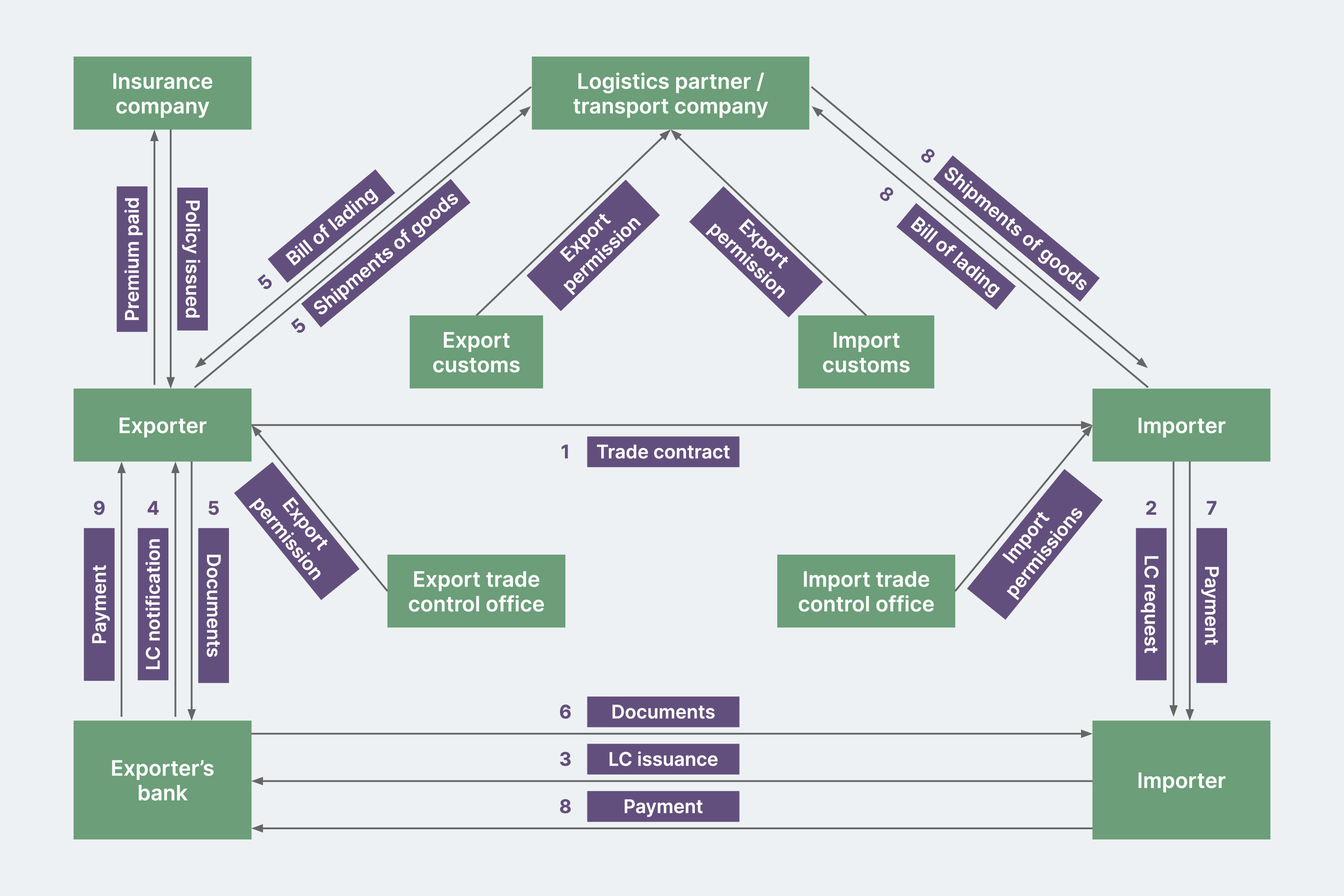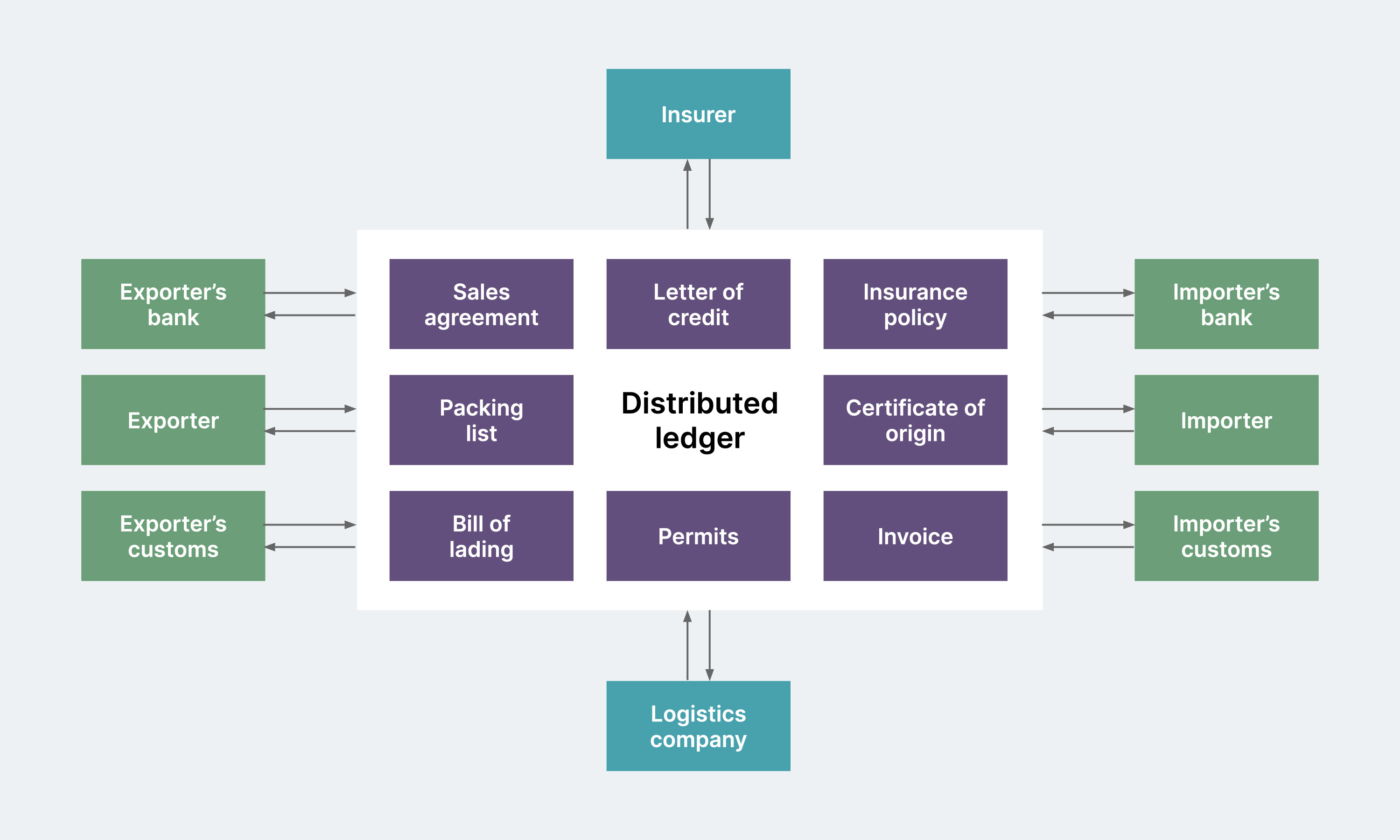From the Mesopotamian times when clay tablets served as promissory notes to today, trade finance has barely changed. Trade finance has barely kept pace with new technologies to ramp up the sector’s efficiency. Nearly 90% of international trade relies on credit, insurance and guarantees. This makes it vulnerable to several risks linked to payments, manufacturing, geopolitics, or often internal problems within a firm. To mitigate these risks, financial institutions offer credit, insurance, and other products.
However, this isn’t enough. The current trade finance ecosystem is fragmented, unreliable, and unviable for small traders. The sector is clogged with intermediaries whose costs are too high for small firms to afford. The millions of transactions processed each day are ridden by paperwork — manual, cumbersome, time-consuming, expensive and prone to errors and fraud – aside from the inconsistent audit trails.
In addition to the importer and exporter, international trade involves banks, shipping companies, receiving companies, insurers, and other parties. Together, they create nearly 5,000 data field interactions, most of which are duplicate or redundant. On the other hand, governments are increasingly clamping down on global trade, setting up stricter frameworks to support anti-money laundering efforts. Fulfilling these requirements also raises the costs for trade finance.
We believe that blockchain technology can help solve these problems and more. Blockchain and associated smart contracts make it possible to do end-to-end automation of trade finance activities.
Eliminating redundancies. Blockchain enables a shared ledger that each of the participants has access to and can add documents/details that are propagated to everybody else.
Enabling a single source of truth. Contract conditions can be coded in the form of a smart contract visible to importer/exporters’ banks, insurance firms, freight forwarders etc., creating a single source of truth across the entire ecosystem through transactions verified by cryptography.
Optimizing efficiencies. Letter of Credit, Bill of Lading and other documents crucial to trade finance can be generated digitally and executed with digital signatures.
Reducing the risk of fraud. Blockchain improves authenticity. Contract terms and alterations are recorded on the chain mitigating tampering that might lead to trade disputes. It eliminates the counterparty risk by ensuring payment on delivery of goods.
Operationalizing workflows. Smart contract events emitted at each stage serve as a trigger for the next participant to review and process workflow for the next milestone.
Data ownership and compliance. Each participant will still be able to own their data and comply with local jurisdictions.
Thus, the current problem of heavily relying on centralized intermediaries is alleviated and paves the way for a consensus-based ecosystem built on trust. This is already happening, though. eTradeConnect, a consortium of 13 banks in the South East Asian region, is built on Hyperledger Fabric. Indian Banks' Blockchain Infrastructure Co Pvt Ltd (IBBIC) is preparing to verify GST invoices and e-way bills using blockchain to improve transaction times and reduce frauds. VAKT, a commodities post-trade management platform, is built by Thoughtworks on blockchain.
Contrary to popular belief, blockchain is no longer a niche tech for the digitally mature alone. It is growing to shift the paradigm for the entire trade finance ecosystem. Here’s how.
What would the future look like with blockchain


Fig 1: Current state of trade finance


The sequence of events that would occur on a blockchain based trade finance system
- Generate sale agreement using a smart contract
- The sale agreement between the importer and exporter is shared with import bank
- Import bank reviews agreement and generates LC. The LC is shared with the export bank on the blockchain. A smart contract event is emitted
- Exporter bank reviews the LC smart contract and approves. Exporter reviews the smart LC
- Exporter initiates shipment processes once the smart LC is approved by exporter (i.e. digitally signed by exporter)
- The freight carrier starts shipment after lading of goods. A digitised Bill of lading is digitally signed by the carrier and uploaded on chain
- Goods are inspected by trade control and customs in the exporter country. Digitised Bill of Lading and other documents are digitally signed by each party
- Goods are inspected by trade control and customs in the importer country. Digitised Bill of Lading and other documents are digitally signed by each party
- Importer inspects the goods, verifies the goods with the BL and takes ownership of the goods from the port of discharge. This triggers the payment instructions.
Setting up for a successful blockchain journey


Assess: do we really need blockchain?
While there is no doubt that blockchain can bring significant improvements, it is still only a part of the solution. To make the most of blockchain, organizations must carefully consider the strategic and design implications of bringing it to their current processes.
Businesses need to:
Perform a comprehensive assessment of existing systems architecture, IT infrastructure, scalability, security and regulatory acceptance to validate fitment of a blockchain-based solution
Study as-is processes, identify use cases and map blockchain’s applicability to the identified use cases and journeys
Evaluate fitment of blockchain to underlying processes vis-a-vis other technologies such as traditional databases, IOT, AI and ML
Clearly define success metrics, perform build-or-buy analysis and risk-return comparison
If a blockchain solution seems to be the most optimum one only then assess which blockchain to use i.e. public / private / consortium based or hybrid.
Align: roadmap for future
In the next phase of this journey once a need for a blockchain solution is established, businesses will need to carve out a roadmap that is visible to all stakeholders. Key highlights of this phase are:
A good roadmap documents business, technology and strategic objectives for ‘Now, Next and Later.’ Begin by identifying key success factors for each phase of the blockchain transformation program
Set up a dedicated cross-functional team responsible for aligning business, operations and technology
Design systems for continuous planning and tracking of actuals with the pre-defined success metrics
Monitor regularly for relevance to the changing internal and external environments. Given that blockchain technology is still in its infancy, create a culture of ‘fail fast and course correct’ to achieve delivery excellence
Build change management processes within an organization and evangelize blockchain adoption outside to bring about shared consensus among stakeholders
Adopt: ecosystem play over playing singles
Leveraging blockchain does not have to mean a complete revamp of incumbent legacy systems. For instance, you can begin with transparency enhancements or create process efficiencies to achieve high ROI. In parallel, you can continue to ring-fence your already digitized internal systems.
In the last few years, we have seen tremendous interest in blockchain and cryptocurrencies. While this has fuelled hype, fear and misconceptions, it is also true that distributed ledger technologies such as blockchain have the potential to shape the future of the trade finance industry. Successful blockchain adoption will require changes to regulations and administrative practices. Businesses and other stakeholders need to work together with local governments and evolve current standards. This needs an agile and continuous improvement approach.
Disclaimer: The statements and opinions expressed in this article are those of the author(s) and do not necessarily reflect the positions of Thoughtworks.


















